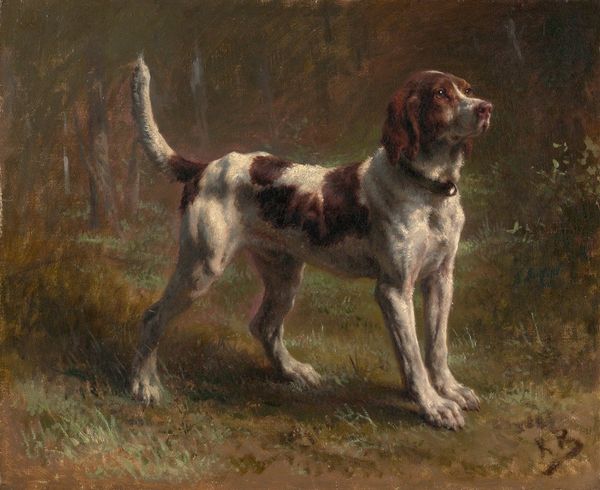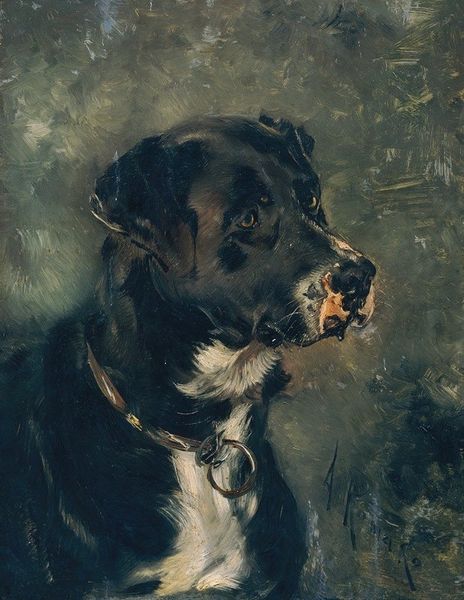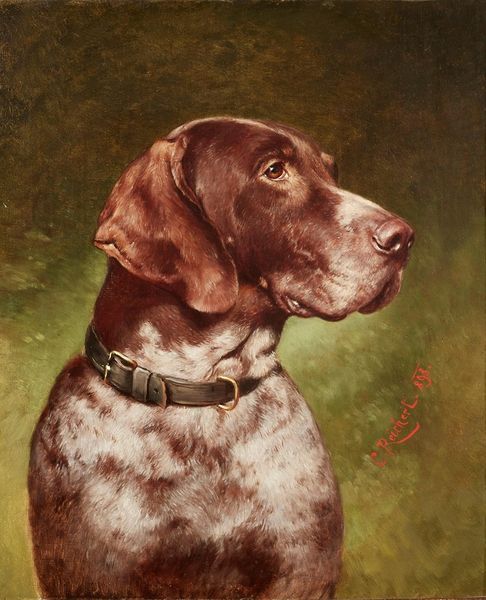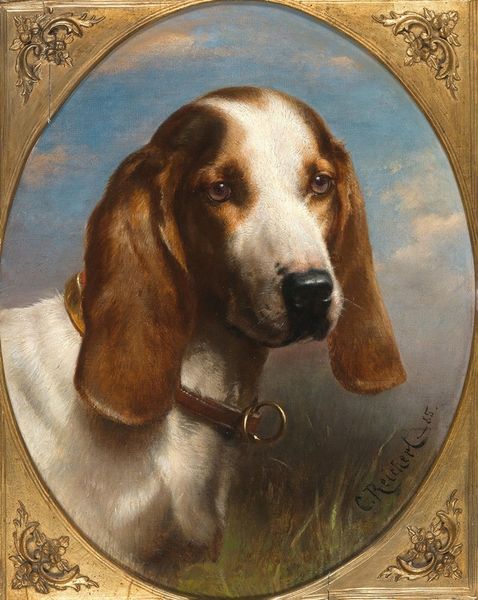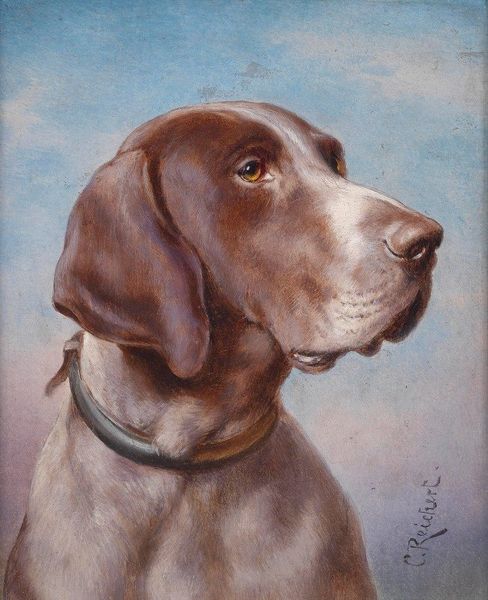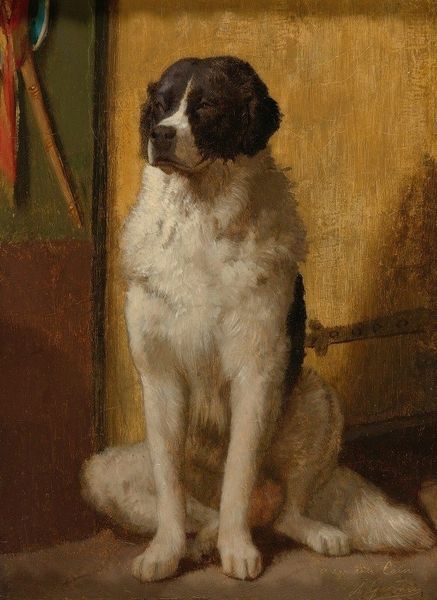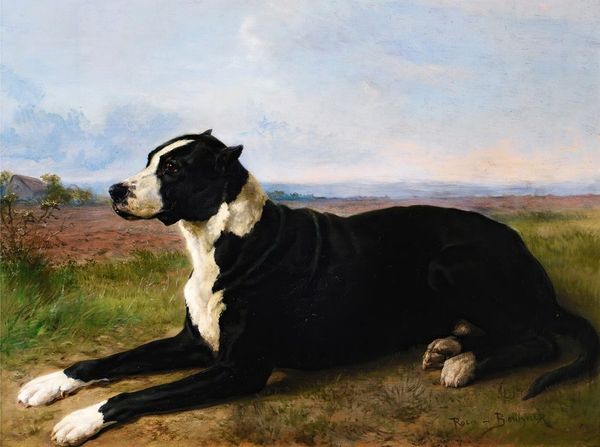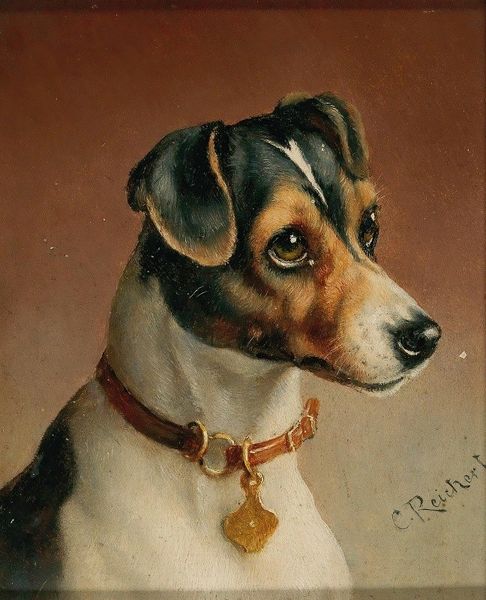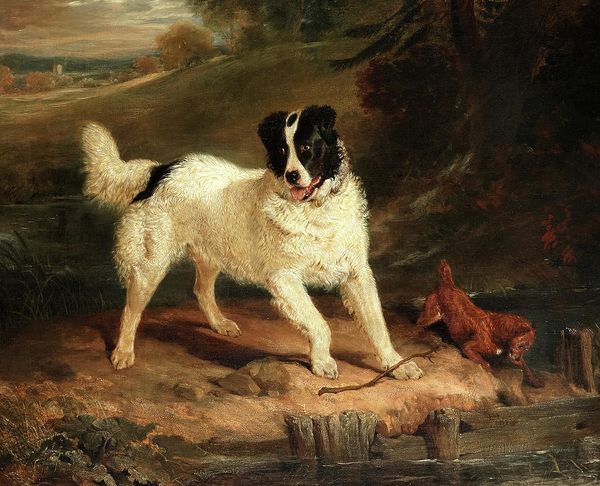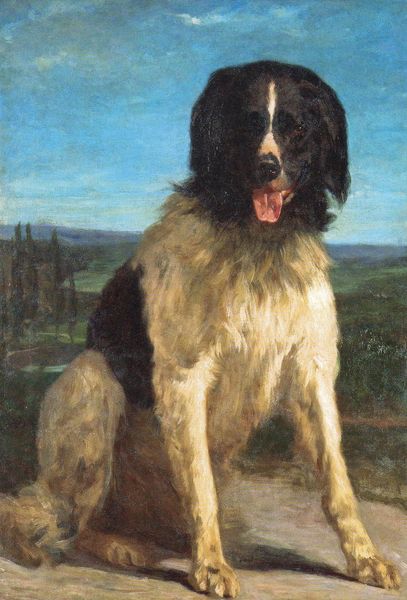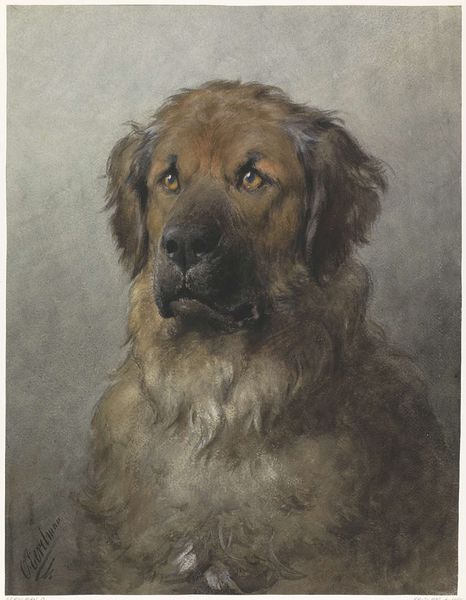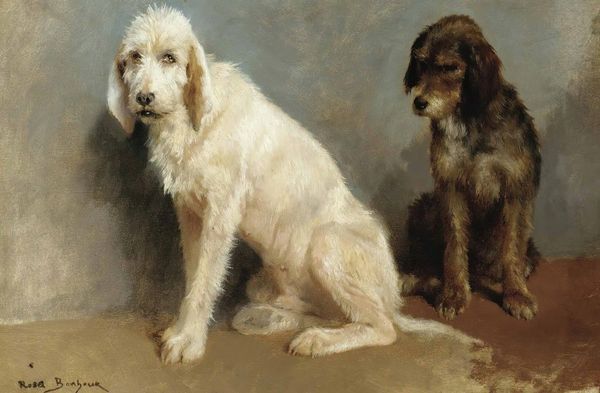
Copyright: Public Domain: Artvee
Curator: Here we see Carl Reichert's 1871 oil on canvas painting titled, "Hector." Editor: It strikes me as very classical in its composition—the stark oval shape focusing our gaze intently on the dog, with that subdued landscape hinting at a Romantic backdrop. Curator: Absolutely, and considering the context of 19th-century genre paintings, the portrayal of animals wasn't just about their physical appearance; it was deeply intertwined with social status, and often, anthropomorphism. Editor: Let’s not forget the pure artistry though, the rich texture achieved through Reichert’s masterful oil painting. The soft gradations of black create form and capture the subtle light playing across Hector's fur. The contrast between the defined form of the dog and the softness of the sky behind it creates dynamism within a seemingly still composition. Curator: Right, and this emphasis on domestication speaks volumes about Victorian values, reflecting a societal emphasis on control and order—both over the natural world and the laboring classes through ideas about control. Editor: But there's also this palpable emotional resonance, wouldn't you agree? Curator: Yes. Look at the use of brown in the landscape, as well as the coloring of the dog's eyes, creating a warm look—quite at odds with the general cultural expectations around this kind of commissioned pet portrait. It adds a real tenderness and connection with the animal. It complicates these portraits, opening space for discourse beyond control and property, or Victorian standards more generally. Editor: You’re right; beyond technical brilliance, this piece holds an emotive depth that's quite affecting, especially given the stoicism one expects from pet portraits of the era. Curator: Indeed, it compels us to reassess conventional interpretations and perceive a rich and surprisingly sympathetic view of a cultural past often perceived through stereotypes and flat depictions. Editor: A potent reminder that formalism isn’t just about technique; it’s about how all those choices merge to spark meaning, intention, and of course emotion.
Comments
No comments
Be the first to comment and join the conversation on the ultimate creative platform.
